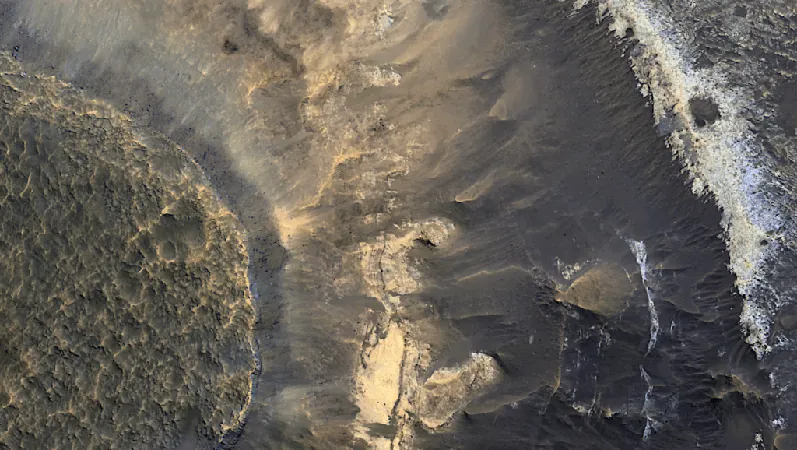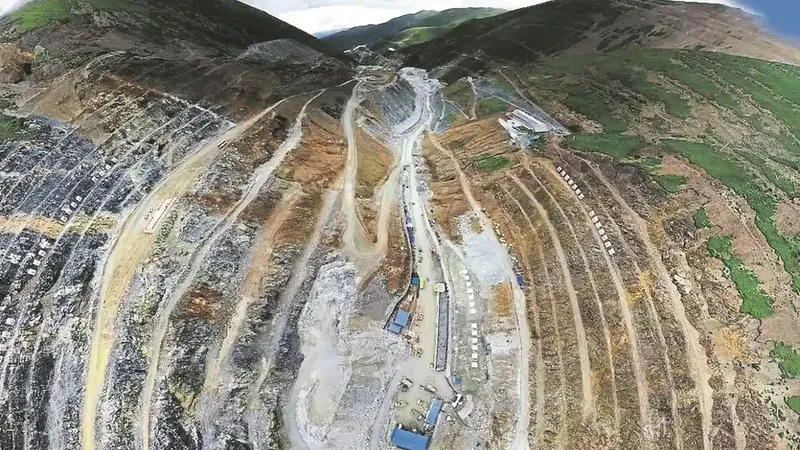
Mars' Hidden Clay Layers: An Ancient Oasis for Life?
2025-06-18
Author: Charlotte
Could Thick Clay Deposits on Mars Have Supported Life?
Mars, our enigmatic neighbor, boasts thick clay layers that stretch hundreds of feet deep, captivating scientists eager to unearth clues of ancient life. These formations are particularly intriguing because they require water to form, leading researchers to believe they harbor secrets about the planet's past.
The Study: Water, Stability, and Potential Habitats
In a groundbreaking study published in *Nature Astronomy*, a team from The University of Texas at Austin delved into these clay terrains, revealing that many of them originated near ancient standing water bodies that dotted the Martian landscape billions of years ago. This stable environment, characterized by minimal topographic changes, could have ensured that these mineral-rich clay layers offered a consistent habitat for life to develop.
Rhianna Moore, the study's lead author and a postdoctoral fellow at UT's Jackson School of Geosciences, noted, "These areas have a lot of water but not a lot of topographic uplift, so they’re very stable. Favorable conditions might be able to be sustained for longer periods of time."
Unlocking Mars' Wet History
This research is part of UT's Center for Planetary Systems Habitability effort, which examines the origins and requirements for life not just on Earth, but also on distant worlds. Moore, now with NASA as part of the Artemis mission team, explored over 150 clay deposits identified by the Mars Reconnaissance Orbiter. Her findings unveil how these clays predominantly reside at low elevations near former lake deposits, revealing a tranquil balance of chemical and physical weathering that has allowed them to survive through the ages.
A Unique Martian Environment and Its Implications
Interestingly, the clay formations might hint at an unbalanced ancient water and carbon cycle on Mars, potentially explaining the absence of carbonate rocks in regions where they would normally be found on Earth. Billions of years ago, when Mars was a vibrant aquatic world teeming with lakes and rivers, these thick clay layers emerged.
Tim Goudge, a co-author and assistant professor at the Jackson School, likened the Martian clay environment to the humid regions on Earth where thick clay layers thrive, stating, "On Earth, the places where we tend to see the thickest clay mineral sequences are in humid environments with minimal physical erosion… these results suggest similar conditions existed on Mars."
Mars vs. Earth: A Planet Apart
However, the clay layers also reveal a Martian world contrasting sharply with Earth's current dynamic landscape. Unlike Earth, where shifting tectonic plates constantly unearth new rock that reacts with atmospheric CO2 and water—regulating climate—Mars is tectonically inactive. This inactivity may have allowed greenhouse gases like CO2 to accumulate, creating warmer, wetter conditions that further fostered clay formation.
Moore hypothesizes that this absence of fresh, reactive rock could also explain why no carbonates have formed on Mars. The ongoing clay formation might have absorbed water and trapped crucial chemical byproducts, rather than dispersing them into the broader Martian environment.
A Quest for Answers
As we unravel the complex history of our neighboring planet, this study sheds light on the potential for past life on Mars. Could these ancient clay layers hold the keys to understanding life's development beyond Earth? The quest continues, fueled by new findings and an ever-growing curiosity about the Red Planet's mysterious past.









 Brasil (PT)
Brasil (PT)
 Canada (EN)
Canada (EN)
 Chile (ES)
Chile (ES)
 Česko (CS)
Česko (CS)
 대한민국 (KO)
대한민국 (KO)
 España (ES)
España (ES)
 France (FR)
France (FR)
 Hong Kong (EN)
Hong Kong (EN)
 Italia (IT)
Italia (IT)
 日本 (JA)
日本 (JA)
 Magyarország (HU)
Magyarország (HU)
 Norge (NO)
Norge (NO)
 Polska (PL)
Polska (PL)
 Schweiz (DE)
Schweiz (DE)
 Singapore (EN)
Singapore (EN)
 Sverige (SV)
Sverige (SV)
 Suomi (FI)
Suomi (FI)
 Türkiye (TR)
Türkiye (TR)
 الإمارات العربية المتحدة (AR)
الإمارات العربية المتحدة (AR)